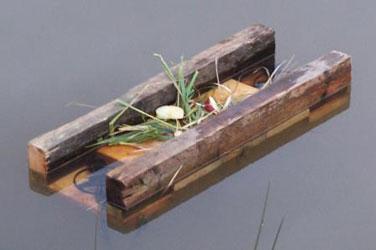Lethal Control for Muskrats
Muskrat Information:
Click on one of the links below to learn more:
The most practical solution to muskrat problems is to remove individual animals. Muskrats can be shot in the early morning or at dusk with a .22 caliber rifle. However, the most effective and practical method of removing problem animals is trapping. Muskrats are among the easiest furbearers to trap.
The most efficient traps used to catch muskrats are the #1 or 1 1/2 steel leg-hold or the size 110 Conibear trap. Conibear traps are recommended because they kill the animal almost instantly. The "quick kill" action of the Conibear trap allows it to be set in shallow or deep water runways. Leg-hold traps must be set near deeper water. This is necessary to prevent escape because muskrats instinctively dive into the water when alarmed. Upon diving, the animals quickly drown.
To find suitable trapping areas, find "runs" along the bank where the muskrats go in and out of the den or out of the water to feed (Figure 2a - 2b). These trails are usually easy to see if the water is clear, or you can feel them underwater with your hands. Place the Conibear or leg-hold trap underwater as close to the den entrance or feeding trail as possible without

A muskrat float used to place foot hold traps.
restricting trap function. Be sure to stake the trap securely. If you are using a leg-hold trap, place it in two to three inches of water and stake it in deep water; otherwise, traps should be placed along the bank if a "quick drown" device is used. Using a "quick drown" device is recommended to ensure a swift, painless death. Another effective way to trap muskrats in deep water is to construct an artificial feeding station to place foothold or Conibear traps. Bait the set by nailing an apple, carrot or corn cob to the center of the raft. Be sure to check the traps at least once a day. When you first begin trapping, consider checking the traps twice a day to maximize trapping efficiency.
Remove muskrats only if they are causing a problem because they are a valuable fur resource and an integral part of aquatic ecosystems. For more information refer to the full extension publication FOR-51.
